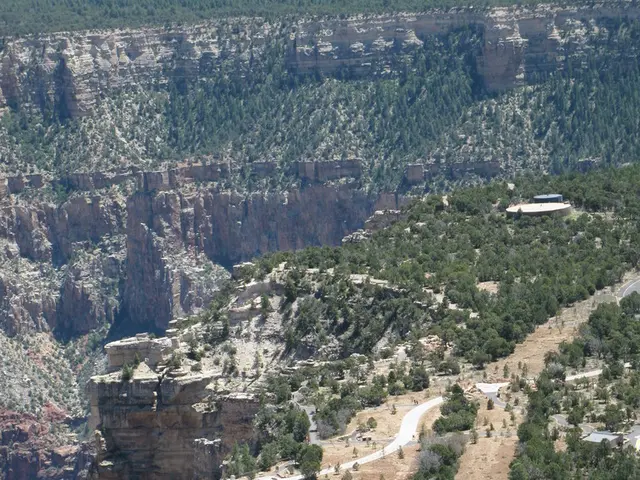In Kazakh Culture, Wolves, Horses, and Crows Hold Symbolic Significance Beyond Ordinary Animals
From ancient times, the Kazakh nomads revered a multitude of animals that shaped their way of life, traditions and beliefs. The wolf, horse, crow, eagle and many other creatures held unique places in their culture, symbolizing values such as resilience, unity, and survival. Here we explore the fascinating history behind these sacred animals and their impact on Kazakh life.
A Deep Connection with the Wild
Historian Saltanat Asanova explains that traditional Kazakh society depended entirely on nomadic cattle breeding, fostering a profound reverence for animals. The lifestyle of wolves served as a model for this nomadic existence, while the horse became the lifeblood of their daily lives.
The Power of the Wolf
In the vast Eurasian steppe, wolves roamed with herds of artiodactyls, hunting selectively. Wolves, especially those in the steppe, never targeted the strong, young animals or the leaders of the herd. Instead, they hunted from the edges, preying on the weak, the sick, or the young. This behavior struck a chord with the nomads, who saw wolves as both predators and guardians of the ecosystem. The wolf was a revered totem among the steppe tribes, symbolizing resilience, unity, and survival. Echoes of this influence remain in traditional games like "kokpar" or "kok bori," meaning "blue wolf."
The Essential Horse
Unlike settled societies that relied on cows, nomadic Kazakhs raised horses, camels, and sheep – animals capable of traversing long distances without losing weight. Every stage of a horse's life had its own specific name, reflecting the deep cultural bond between nomads and their horses. Horses have more than 10 names for different life stages, such as 'zhylky,' 'at,' 'aigyr,' and 'biye.' The horse was not just a means of transportation but a companion. In Kazakh folklore, horses often chose their rider, forming an unbreakable bond.
Spirits and Guardians of the Herd
The nomads also believed in spiritual guardians for their animals. Zhylkysh ata protected horses, Oisylkara watched over camels, Shopan ata guarded sheep, and Zengi baba kept an eye on cows. These figures remained central in nomadic folklore and were invoked for protection and prosperity.
Crows: A Cautious Connection
Among birds, the raven was believed to ward off the evil eye and protect children. The crow was considered a sacred bird, and there is a very careful and respectful attitude toward this bird. It served as a bridge between the sky and the earth, and its presence was seen as a good omen. Good luck or bad luck often depended on the context, but specific cultural significance of crows in Kazakh traditions is not well-documented in recent literature.
Eagles: Masters of the Skies
Golden eagles, known as "berkut" in Kazakhstan, played a crucial role in nomadic life. Falconry – the practice of hunting with eagles – is an ancient tradition symbolizing strength, skill, and tradition. It is a skill passed down through the generations and represents a significant part of Kazakh cultural heritage.
The Symbiosis of Humans and Nature
A deep connection with animals was reflected in the Scythian-Saka animal style – a hallmark of steppe art. Kazakh ornament today is an evolution of the ancient Scythian animal style, but has moved toward symbolism. Some examples of ornaments include 'tuyetaban' (camel tracks), 'koshkarmuyiz' (ram's horns), and 'kusmuryn' (bird beak patterns).
Kazakhs viewed nature as sacred, a belief system known as Tengrianism, a philosophy similar to Japanese Zen, where all-natural elements are seen as divine. In addition to animals, nomads also worshiped other forces of nature: the earth, water, and sky. This worldview featured a harmonious relationship with nature, ensuring sustainability and respect for all living beings.
This article was originally published on Tengrinews.
From traditional Kazakh society, each life stage of a horse was given a specific name, reflecting the deep cultural bond between nomads and their horses, making them more than just means of transportation but companion animals.
The bird, specifically the crow, was considered sacred by nomads, serving as a bridge between the sky and the earth, with a very respectful attitude towards this bird in Kazakh culture.
In the vast steppe, golden eagles, or "berkut," held great significance, as falconry was an ancient tradition symbolizing strength, skill, and tradition in nomadic life.
Nomads also believed in spiritual guardians for their animals, with figures like Zhylkysh ata protecting horses, Oisylkara watching over camels, and Shopan ata guarding sheep, all of which remained central in folklore and were invoked for protection and prosperity.
In addition to animals, nomads also worshiped other forces of nature within the philosophy of Tengrianism, a sacred view of nature that ensured sustainability and respect for all living beings in the vast Eurasian steppe.





